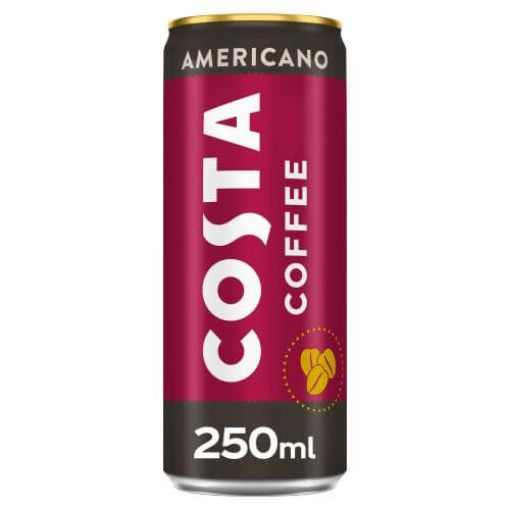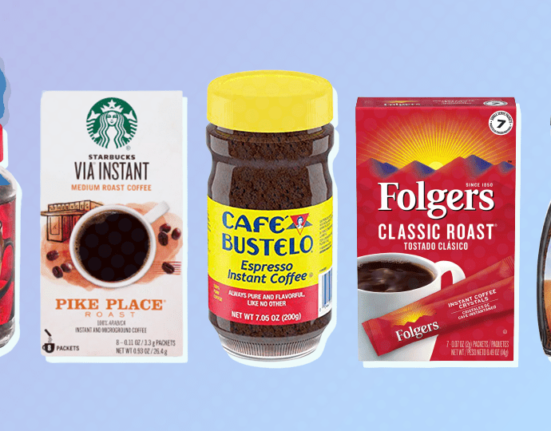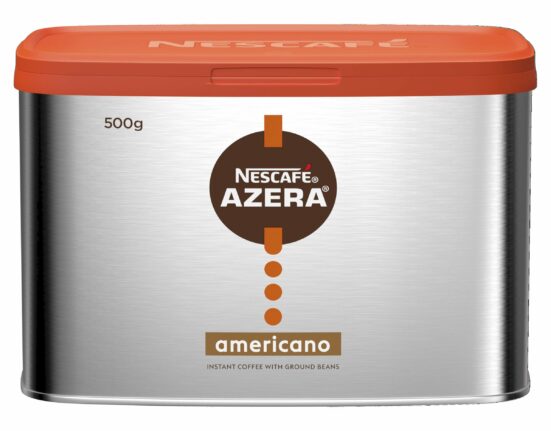In recent years, the fascination with ready-to-drink (RTD) beverages has markedly increased, particularly within the coffee industry. As a prominent player in this burgeoning market, Costa Coffee has made significant inroads with its Americano offering. In essence, the Costa Coffee Americano embodies a quintessential appeal—a synthesis of convenience, taste, and caffeine efficacy that captivates both the casual consumer and the true aficionado. However, beyond its flavor profile and packaging lies a backdrop of cultural and economic implications that warrant exploration.
Understanding the Americano: More Than Just a Brew
The Americano is revered for its simplicity and depth. It primarily consists of espresso and hot water, creating a diluted but flavorful coffee experience. This drink’s origin can be traced back to American soldiers during World War II, who sought to modify the robust espresso served in Italy to cater to their palate. The Costa Coffee Americano, while rooted in this traditional conception, brings additional layers of complexity to the contemporary coffee consumer.
A Delicate Balance of Flavor
When assessing the flavor profile of the Costa Coffee Americano, one discovers a nuanced intermingling of rich, bold espresso notes with a smooth, velvety finish. The coffee beans are meticulously sourced, often hailing from the mountainous regions that provide the optimal terroir for coffee cultivation. The interplay of acidity and bitterness creates a harmonious blend that offers a satisfying drinking experience. One might ponder: does the essence of the bean truly manifest itself in such a readily accessible format, or are we merely scratching the surface of a deeper sensory encounter?
Packaging and Accessibility: Bridging Traditional and Modern
The introduction of the RTD format for the Americano by Costa Coffee signifies a pivotal shift in the coffee landscape. With the can’s sleek design, it stands as a modern emblem of accessibility and convenience, appealing to a demographic increasingly mobilized and perpetually engaged in a fast-paced lifestyle. Herein lies a playful dichotomy—can the intricate rituals of coffee appreciation persist within a world of instantaneous gratification?
Urban Coffee Culture and the On-the-Go Consumer
The RTD Americano coincides with the zeitgeist of urban coffee culture, illustrating a distinctive transformation in consumption patterns. Coffee is no longer merely a beverage; it represents a lifestyle. While traditional cafes foster a communal atmosphere, the RTD coffee can caters to individuals seeking solace in moments of solitude or productivity. The implications for social interaction provoke reflection: does coffee consumption in a communal setting enhance the experience, or does the solitary sip from a can offer its own form of solace?
The Impact of Coffee Consumption on Gender Dynamics
In examining the cultural dimensions of coffee consumption, one must consider the implications on gender. The coffee shop has historically been a gathering space—a confluence of ideas, discussions, and creativity. Yet the shift towards RTD formats poses questions regarding inclusivity in coffee culture. Are women feeling as empowered in their choice of a can of Costa Americano as they would while engaged in animated discourse over crafted lattes in a café?
Moreover, as coffee brands like Costa Coffee jettison traditional gendered marketing, is there a broader movement towards a more egalitarian appreciation of coffee? The playful inquiry remains—does the drinking of an Americano from a can alter one’s perception of coffee culture, or does it serve to democratize the experience, empowering all consumers equally?
Environmental Considerations: The Sustainability Challenge
As the coffee industry grapples with the pressing realities of climate change and resource sustainability, Costa Coffee’s approach to packaging and sourcing underscores an often-overlooked aspect of the coffee experience. The transformation from brewed coffee to RTD may carry ecological implications that are paramount to the conscientious consumer. Are we, in our quest for convenience, overlooking the responsibility towards the environment? The debate regarding single-use packaging vis-à-vis the sustainability practices adopted by coffee producers requires a nuanced understanding.
Furthermore, the cultural perception of environmental responsibility in coffee consumption invites a dialogue about purchasing choices. As consumers, do we carry the weight of ethical considerations with each sip of Costa’s Americano? Are we as intentional in our coffee purchases as we might be in selecting organic produce or fair-trade products? This contemplation leaves room for both tension and hope within the consumer landscape.
Enhancing the Experience: Creative Pairings and Customizations
The world of the Costa Coffee Americano is not limited to its intrinsic qualities alone. The advent of creativity and customization allows consumers to explore innovative ways to elevate their coffee experience. Imagine pairing the Americano with a decadent dark chocolate or perhaps incorporating flavor enhancers such as coconut milk or flavored syrups. Beyond mere consumption, these enhancements challenge the boundaries of traditional coffee experiences and invite adventurous exploration.
Moreover, in the era of social media, the visual allure of coffee culture burgeons. Presenting the Costa Americano against a picturesque backdrop or experimenting with unique garnishing techniques only increases its appeal. This raises the query of whether the appreciation for coffee has metamorphosed into a performative act, where aesthetic harmony and social validation become desirable pursuits within the coffee consumption community.
Coffee as a Conduit for Cultural Exchange
As an emblem of globalization, coffee serves as a medium through which diverse cultures intersect. The RTD Americano, while embodying the essence of a particular beverage, simultaneously echoes the tastes and preferences of a wider audience. It opens the door for dialogue regarding the international implications of coffee consumption. With Costa Coffee’s presence expanding beyond its native UK, one must reflect: does the Americano transcend geographical boundaries, or does it run the risk of homogenizing regional coffee traditions?
In conclusion, the Costa Coffee Americano epitomizes a confluence of tradition and innovation, comfort and convenience. Its presence in the realm of RTD beverages signifies more than just a sip of coffee; it embeds itself within broader cultural, economic, and environmental narratives. Engaging with this beverage invites deeper thought and reflection—whether one perceives it as a means to savor the fleeting moments of life or as an opportunity to engage with the multifaceted world of coffee consumption. The playful challenge posed to every reader beckons an exploration beyond the surface. With every can of Costa Americano, does your experience reflect merely a need for caffeine, or is it an invitation to engage with global narratives, cultural identities, and the shared enjoyment of coffee?








Leave feedback about this